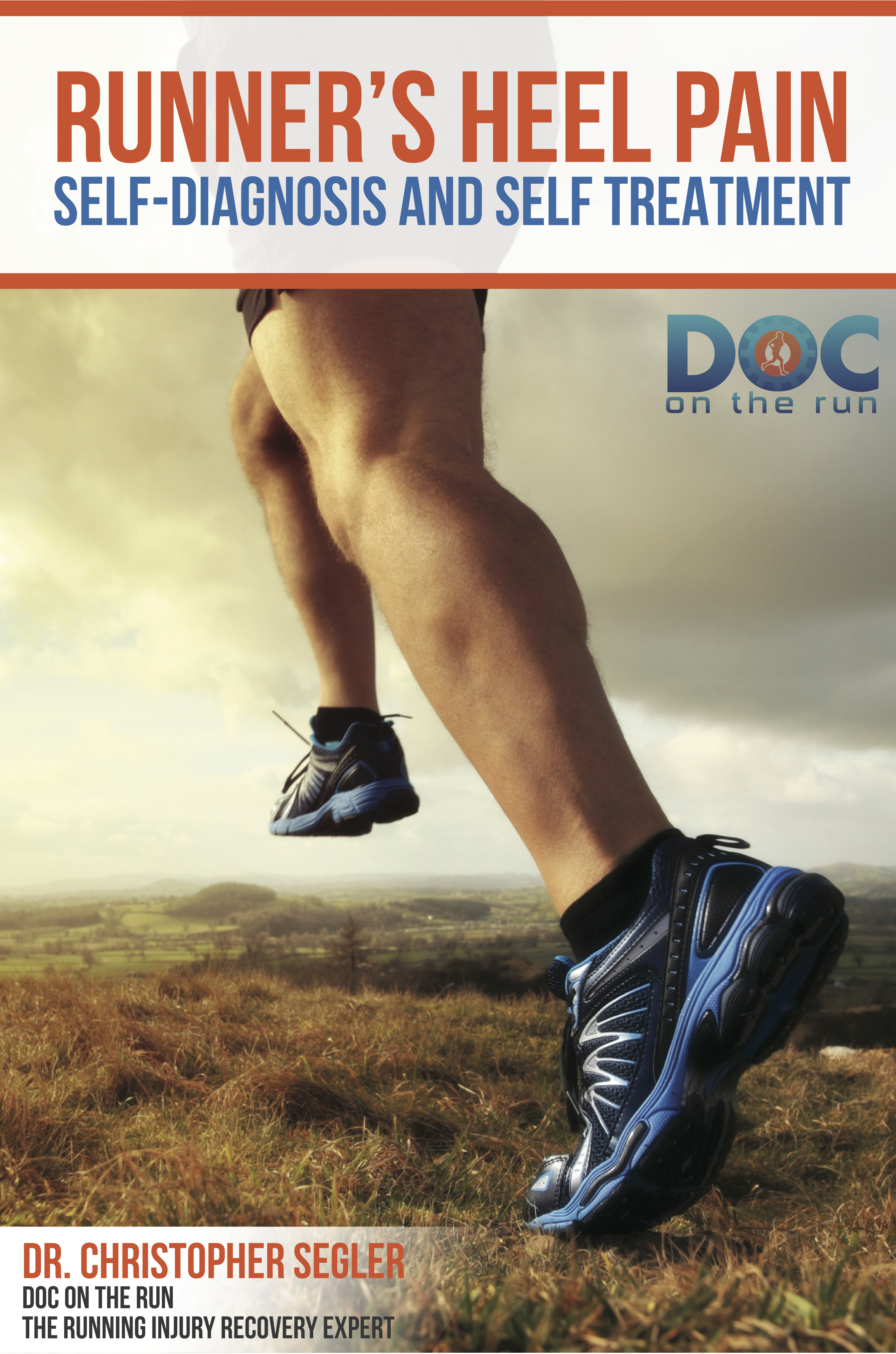
Can you run with heel pain?
Is heel pain keeping you from running? If so, the big question you are asking is “Can I run?” This book will teach you exactly how the sports medicine podiatrist decides whether you can run or not. The good news is that in most cases you can keep running.
Insider strategies for running with heel pain are revealed.
Do you really have Plantar Fasciitis?
Plantar fasciitis is the default diagnosis when a runner has heel pain. But that isn’t the only cause. This book will teach you how you can tell the difference between plantar fasciitis, stress fractures, and other common caused of runner’s heel pain.
How to Treat Runner’s Heel Pain:
This book illustrates how runner’s treat their own heel pain, even without the help of a doctor. But this book also teaches you the treatments doctors use when home remedies don’t work.
Written by the Running Expert:
Dr. Christopher Segler is a nationally recognized expert on running injuries and running biomechanics. He is a Doctor of Podiatric Medicine, a 15-time Ironman Finisher, 2015 Ironman All World Athlete and finisher of the Ironman Triathlon World Championships in Kona Hawaii. His sports medicine practice focuses on the rapid recovery of running injuries. The goal is always to keep runners running. This book will help you run as well.
Recently listed on Amazon.
Chapter 3: The self-exams that fit with the common causes of heel pain
Plantar fasciitis
To check for plantar fasciitis, you should start by ruling out all the other possible causes of heel pain as described above. The condition most similar to plantar fasciitis is a plantar fascia rupture, so you should be especially careful to rule that one out.
Plantar fasciitis and a plantar fascia rupture are very similar in terms of where they are tender on physical exam. It is true that, when the plantar fascia ruptures, there are signs of trauma such
as bruising and swelling. Other than that, the only real difference on physical exam is that there is a difference in the tension of the plantar fascia when comparing one foot to the other. When you flex your ankle and flex the big toe at the same time, the plantar fascia becomes taught. If you are thin (like most runners), the tightened plantar fascia will even bowstring slightly becoming, visibly taught under the skin in the arch.

Pulling up on the ankle and toes tightens the plantar fascia. You can then see and feel the tight ligament under the skin: (see image below)
If you palpate this tight band of tissue, you should be able to feel it all the way from the arch down toward its attachment at the heel.
If you can feel that one foot has a gap, or an area of less tension in the plantar fascia, there may be a tear or rupture in the fascia. If the tear is significant, it may feel much softer or “mushier” than that same location on the other foot.
When making your comparison, be sure that you are flexing the ankle and big toe joint with the same force on both feet. If the tightened band of the plantar fascia feels identical when you compare both feet, it is unlikely that there is a major rupture in the plantar fascia.

| Language | Status |
|---|---|
|
Spanish
|
Translation in progress.
Translated by JF Chapa
|